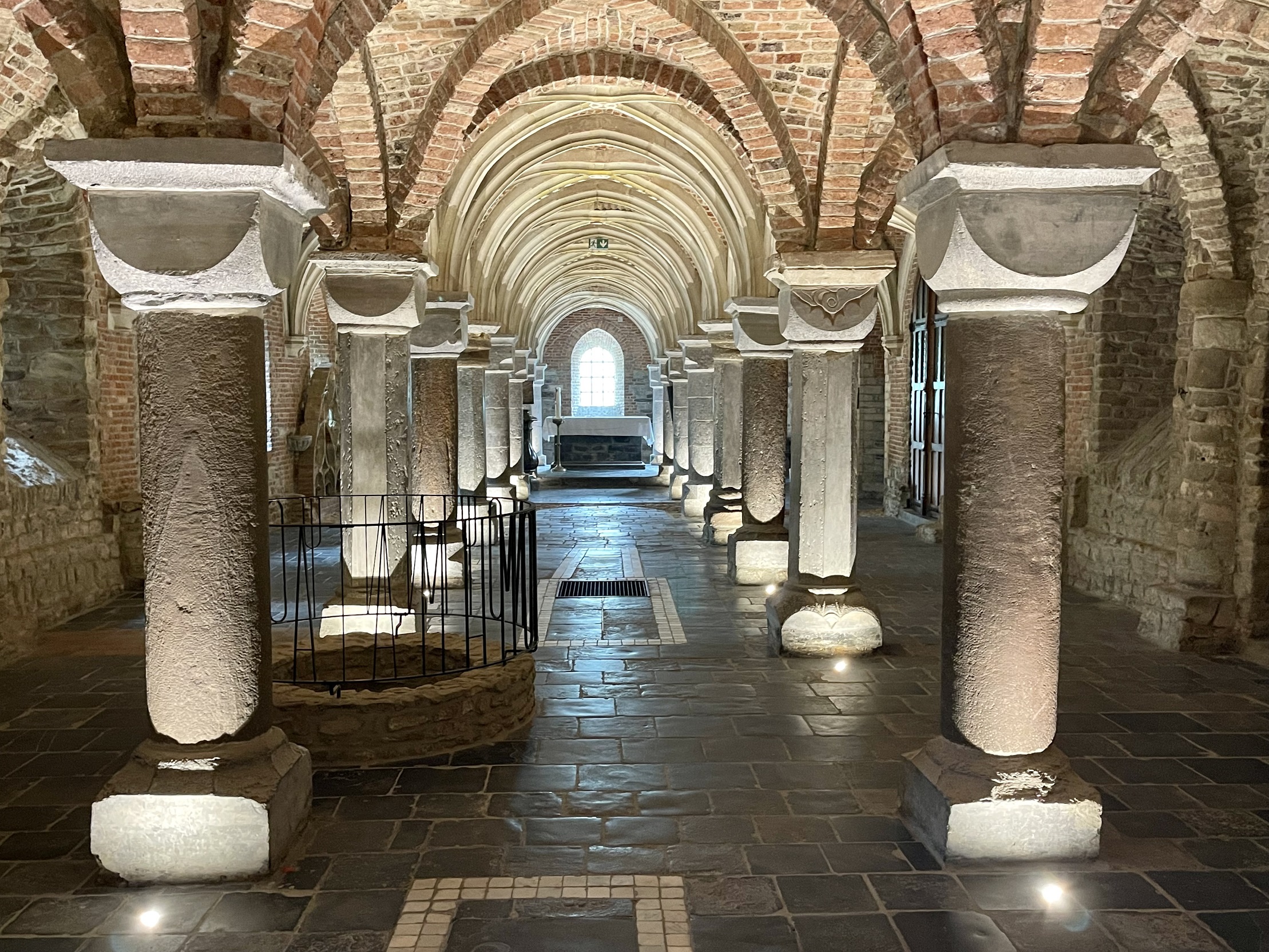Nestled among hills in East Flanders near the linguistic border, the town of Ronse with a population of only about 27,000 seems far larger due to surprising internationalism. According to Tourism Ronse, residents represent 88 nationalities, largely due to the town’s textile industry, which earned a global reputation during its interwar heyday.
Ronse has five sister cities: Sandwich, England; Kleve, Germany; Jablonec nad Nisou, Czech Republic; M'Saken, Tunisia; and Saint-Valery-Sur-Somme, France. Moreover, given this Flemish town’s proximity to Wallonia and France, about 15 percent of the locals speak French as their first language (who call the town Renaix).
Roman Relics
Ronse’s made its name through the 2nd century martyr Saint Hermes: his bones were brought to the town in the 9th century where a shrine was built for him (once a collegiate church, it was elevated in 2019 to ‘Minor Basilica’). St Hermes was beheaded for converting to Christianity, so he was thought to offer hope to the “headless” and cure the mentally ill.
In the Middle Ages, Ronse became a pilgrimage site and De Fiertalommegang (the Fiertel Procession), a 33km medieval procession with the shrine, has been held in the town every year since 1090.
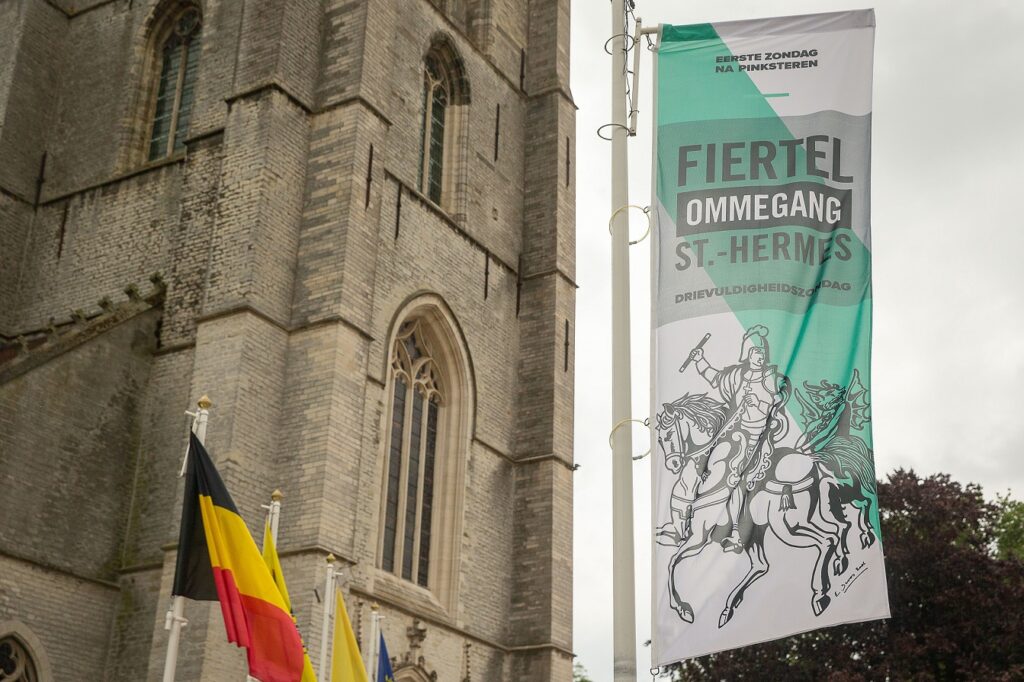
The Fiertalommegang or Fiertel Procession starts here
The majestic crypt, unusually located on the ground level with windows letting in light, is the largest in western Europe with 32 columns (of different styles) and vaulted ceilings. It contains a hidden burial chamber, a well, baths once used by the mentally ill and 14th century ceramic pieces under a glass floor.
Look for the signature of Belgian composer Cypriaan De Rore, one of the most famous in the 16th century, on a column near the well and his bust outside the basilica. Note only guided Onze Vrijheid (Our Liberty) city tours from Tourism Ronse give access to the crypt.
Above the crypt is the basilica, which is rare in showing images of the devil in its coat of arms (insanity was once linked to demonic possessed). To the right of the main altar in St Hermes Chapel lies the shrine of relics, watched over by a life-sized equestrian statue of the patron saint. After bathing in the crypt, the severely mentally ill would be attached by chains to a wooden plank in front of the reliquary overnight to get the full effect of St Hermes’ healing power.
The rector of St Hermes Basilica, Reverend E H Michel T'Joen, lives across the street and is a self-proclaimed exorcist: he is supposedly the only one in Flanders, and his evictions of malevolent spirits are recognised by the diocese of Ghent. The nearby village of Ellezelles is known for witches so the exorcism business should be good.
The Fiertel inspires about 5,000 people a year to walk with shrine bearers (Fierteldragers), a group of about 60 men, historically shoemakers, who take turns in four carrying the 83kg box on their shoulders – in a wide circle around town on the Sunday after Pentecost. Medieval pilgrims were only admitted to the crypt if they walked at least a day to reach Ronse, and as locals lived too close, their procession went around town instead.
The Fiertel (derived from the Latin word for “reliquary”) passes both real and “spiritual” chapels en route through several villages, including Ellezelles, and residents put flags out for the occasion. The event begins the prior Saturday morning with a tambour and flute ceremony and a mass at night with three blasts to scare away the devil.
On Sunday at 7am is another mass, then the mayor of Ronse asks the rector of St Hermes Basilica for permission to remove the shrine. At 8am, the city carillonneur rings two handbells in front of the basilica at the Kleine Markt, makes a cross with his feet and sets the procession’s pace musically.
Several days a month, the carillonneur performs 90-minute concerts at the basilica with its 49 carillon bells. In the summer, the courtyard – a former monastery that now includes a landscaped garden, fountain and green archways – serves as the listening area. For panoramic views of the town and Flemish Ardennes, climb 208 steps up the 63-metre bell tower.
Textiles
Ronse has had a textile industry since the 13th century, shifting from wool to flax. By 1830, more than half of the town’s population worked in textiles, and as it expanded, Ronse built cottages in the gardens of existing homes. Examples can be seen today on Barasteegje and Willocqsteegje alleys. During the industry’s heyday in between the World Wars, Ronse was a top textile producer in Flanders.
The history is recounted in the Museum of Textiles (MUST) in the former Cambier-Robette textile factory. It has a weaving mill with 40 looms dating from 1920 to 1987 (many still work), a steam engine and giant puppets representing textile production. It has the classic angled, north-facing ceiling windows of textile factories for indirect sunlight to protect fabrics and keep interiors cooler.
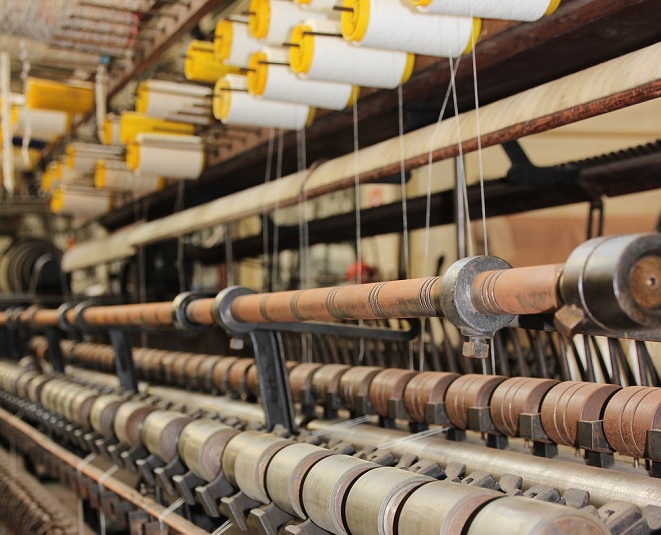
Museum of Textiles
In its textile heyday, Ronse had hundreds of factories, most of which have been converted to other uses, such as the CC De Ververij cultural centre, Theodoor residential-office building (including a holiday apartment for rent), The Loft sports complex, Culture Factory event venue, and TIO3 event and business centre.
The nearby Spaniards' Castle, a striking 17th century garrison originally used by Spanish soldiers to drive out Protestants, is currently closed to the public but can be toured virtually at virtueelronse.be.
In Bruul Park, De Hoge Mote (The High Moat), a former 15th-century defensive structure, is the only surviving moat of nine once in Ronse. It wraps around a stately white building, beautifully reflected in the water. A small bridge leads to an archway and landscaped courtyard, which are best viewed from a connecting lookout tower. On its second floor, De Hoge Mote hosts temporary exhibitions and downstairs is Tourism Ronse. A 200-year-old red beech tree behind De Hoge Mote is protected as heritage as a place of pilgrimage.
Art Deco flourished in Ronse during its textile heyday and Jean-Baptiste Mouroitplein (across from De Hoge Mote) and the streets Léopold Sturbautstraat, Peiier D’Hauwerstraat and Fostierlaan boast excellent examples of townhouses (Mouroitplein also features a 1913 Rik Wouters sculpture of his wife Nel.) Reisroutes.be offers a 4km self-guided walk of the Art Deco district (as well as 3.5km city and 48km e-bike tours) or a two-hour guided walk can be booked through Tourism Ronse.
Textile industrialist Valère Carpentier’s Villa Carpentier on the outskirts of Ronse is an Art Nouveau hunting estate designed by Victor Horta, who was also responsible for its interior, furniture and landscaping.
It is now protected as a monument and privately owned by a Brussels-based couple, who had magnificent sgraffito – a wall décor technique that applies layers of tinted plaster to a moist surface – restored on the front porch (they also named their sons Victor and Horta in honour of the architect). A guided visit can be arranged via Tourism Ronse.
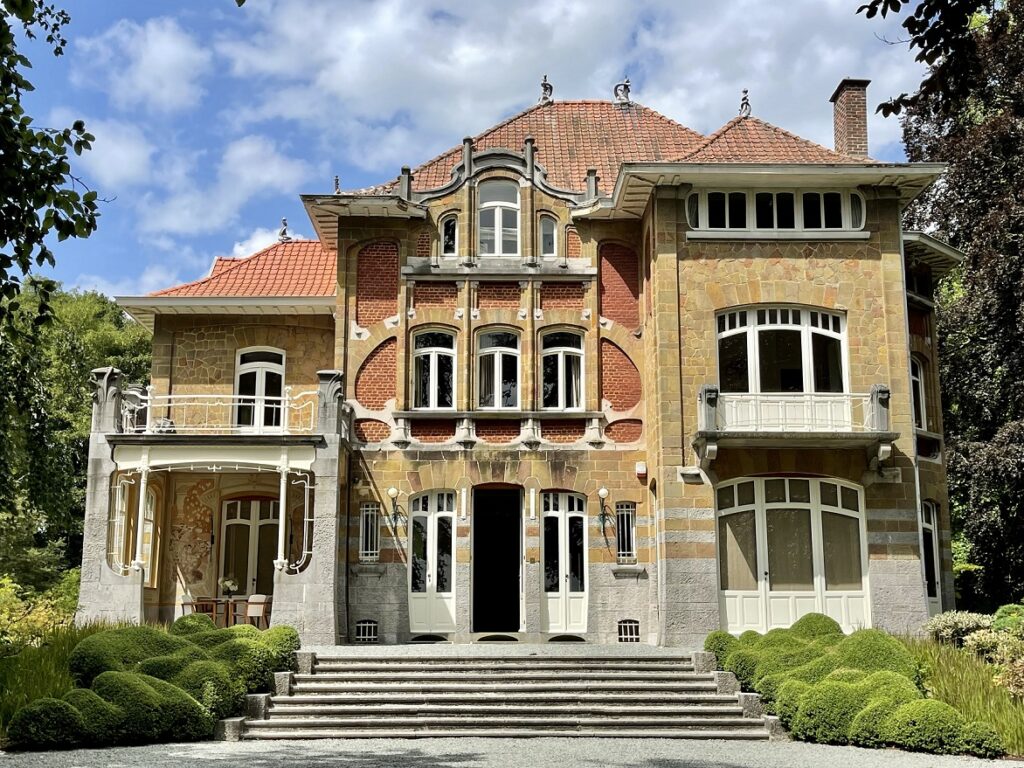
Villa Carpentier
More Art Nouveau examples can be found in townhouses on Wijnstraat in central Ronse and Brasseries Harmonie and Local Unique in the Grote Markt.
The stately, grey town hall in the Grote Markt, built in 1953, features an octagonal steeple with a crowned two-headed eagle and Ronse's coat of arms. The eagle is also depicted on an obelisk in the middle of the square, which was the first public fountain in Ronse in 1812 (a crown with the letter 'W' for William I, king of the Netherlands, used to be at the top, but it was removed when Belgium gained independence in 1830.)
Another architectural landmark is Ronse’s late 19th-century neo-classical railway station. It includes stones from Bruges’ original train station, torn down in 1881, and rebuilt in Ronse (though accidentally backwards so the front faces train platforms). These old stones arguably make Ronse’s railway station building the oldest in Europe.
The 1896 St Martins church, built to replace an 11th-century one, is neo-Gothic with beautiful stained-glass windows. It is part of the De Vrijheid neighbourhood or old town that was a religious village run by clergy within Ronse from the 10th century until the French Revolution. The epicentre was St Hermes Basilica and Kleine Markt, which provided food and shelter for pilgrims.
Within De Vrijheid today, there are five viewing boxes that present a view of the past. Near the Kleine Markt are The Dancing Stones on the Water fountain with moving columns where horses used to drink.
Flemish food
The old St Martin’s church was converted into a cinema, sawmill, garage and as of 2015, De Passage – a modern food hall with two restaurants, a deli, food shop, bakery and event space – attracting a congregation of foodies.
Ronse area products include honey, mustard, beer (Keun brewed locally, Fiertel from Brakel and Quintine from Ellezelles) and cheese made with beer. On Saturdays, Keun brewery sells its beer made with locally-grown hops on-site. Ronse is also known for a salty snack called buuntjes made from roasted yellow peas that a local nicknamed Buuntsies Neutsies used to sell in the early 1900s (there is a sculpture of him near St Hermes Basilica). Samples are available at Tourism Ronse.
Gastronomic Map 2.0 leads visitors on a culinary walk Wednesday to Saturday through De Vrijheid neighbourhood. It includes a Smaakkaart (taste card) for buuntsies, an aperitif, savoury and sweet bites, and a regional beer. Tickets are via Tourism Ronse, where the tour begins.
There is also a biking food and drink tour, a Chasse Patat route through the Flemish Ardennes with 55km and 95km options. Dates and registration are at crvv.be.
Carnival
The annual Bommels Festival is the first weekend after Epiphany (January 6). Bommels, meaning “disguised people,” are accompanied by giant puppets, Theban trumpeters, carnival orchestras, floats and majorettes. The three-day festival begins on Saturday evening with a parade that ends on the Grote Markt with fireworks and music. On Mad Monday, five giant puppets make their annual appearance, including Staf the weaver, Manse the spinner, their daughter Angeleki the seamstress, Ephrem the carillonneur and MAX the fool.
Members of the Giant Carriers of Ronse (Reuzendragers van Ronse) carry the characters (Ronse was recognised as a “giant-friendly city” by the Federation of Giants in Flanders).
The Great Outdoors
In the heart of hill country, Ronse is ideal for hiking and cycling. Its Muziekbos forest has a signposted 10km walking route (also downloadable from routen.be), which begins at Ijsmolenhoeve farm. En route is the Geuzentoren, a medieval-looking, round tower from 1864 where the term Flemish Ardennes was invented.
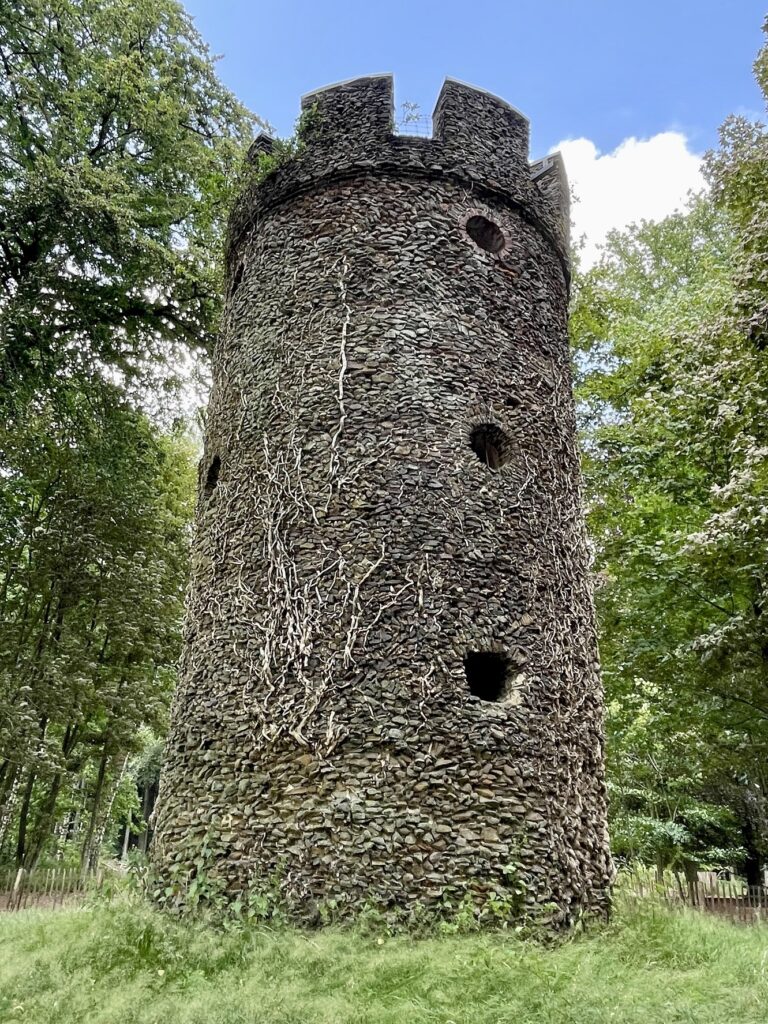
The Geuzen tower
The Muziekbos is at its best in April when bluebell flowers bloom, creating a purple carpet. If you’re lucky, you can spot a fire salamander (black with yellow spots), middle-spotted woodpecker (red, black and white) or little owl (tan and white-spotted). Easier to see is the stunning 17th-century Wittentok Chapel on the edge of Hotondbos forest.
Malander Park on the Kruisberg slope features a panoramic view of Ronse under clear skies. A sundial with a commemorative stone marks the lookout spot. De Stadstuin (The City Garden) urban development features an 11-acre park, including a grassy amphitheatre, near downtown.
Ronse is on the route of the Tour of Flanders, a cycling ‘Classic’, and amateurs often attempt the course. The Kruisberg was the site of major upsets in the 1963 and 1988 World Cycling Championships: the events are depicted on a mural on Kruisstraat, where both occurred.
Instead of cycling through the Flemish Ardennes, you can rent a Vespa from RefugeTrips.be. Or ride in a hot air balloon with one of four companies listed at visitronse.be.
Ronse experience
EXPERIENCE
Open Monumentendag: Heritage Day Flanders on September 10, 2023: the public can tour for free the Louise-Marie Manor & Gardens, St Hermes Crypt, MUST, The Spanish Castle courtyard and repurposed Brewery de Keyser.
Bommels Festival: The first carnival celebration of the year in Belgium, occurring the first weekend after Epiphany, January 6-8, 2024.
Picturale: A biannual illustrator competition where the winner’s work is made into permanent street art in Ronse. It includes a public exhibition and storytelling festival, February 17 to March 30, 2024.
The Fiertel Procession: The 33km walk around Ronse with a shrine containing relics of St Hermes on Trinity Sunday after Pentecost, May 26, 2024.
Kerstmarkt (Christmas Market): About 35 chalets selling original products are set up around a large Christmas tree in the Grote Markt the third weekend in December (December 15-17).
SAVOUR
L’Amuse: A casual, Flemish-Italian restaurant featuring seasonal dishes.
Eviedement: An upscale vegetarian restaurant in De Passage with indoor-outdoor seating.
La Difference: An elegant Belgian restaurant featuring a wrought-iron staircase as well as a stained-glass ceiling and windows.
Maison D: The finest affordable restaurant in Ronse, in a former home.
Tajine: A beautiful Moroccan restaurant with a terrace in De Passage.
St. Hubert: A private event mansion on a pond that opens to the public several times a year for seasonal dining.
SIP & SNACK
Arino: An indoor-outdoor cocktail bar mixing up some of the town’s best drinks.
The Backyard: A casual eatery and bar with a large lawn to chill.
Café Glacé: A new ice cream parlour, café and bar featuring homemade gelato by young Ronse natives.
Brasserie Harmonie: An indoor-outdoor café on the Grote Markt with stunning Art Nouveau décor.
Memling: Across from St. Hermes Basilica, an indoor-outdoor bar that pays homage to old cameras and Kodak’s film days with cabinets of memorabilia.
Winston III: A swanky cocktail bar with exposed brick and well-made drinks.
STAY
Adelaide: A luxury holiday home in a historical building with modern amenities.
Boeckhaege: A beautiful holiday estate for up to 20 people with a swimming pool, jacuzzi and sauna.
Fiertelmeers: A boutique bed and breakfast in a country mansion with a swimming pool, jacuzzi and sauna.
Maison Cambier: A five-star vacation home with Art Nouveau details for up to 22 people.
Remington Hotel: A stylish, three-star hotel in an old mansion conveniently located near central Ronse.
SHOP
Cottage: A modern home and accessories store, including some clothing.
Dockers Chocolade: Artisan chocolate shop that can customise pralines with a photo, logo or text.
Gypsy: A women’s clothing store with stylish Bohemian items.
Pjes Uniq: Near the Grote Markt, a boutique with artisan, mosaic home items from candle holders to vases.
Men & More: A fashionable men’s clothing store with popular brands.

